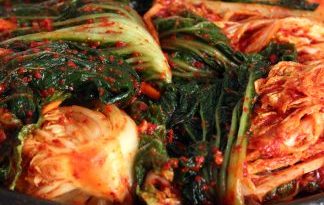A Possible Solution for Obtaining Kosher Cell Cultures from Live Animals
One of the challenges in culturing meat is obtaining stem cells from which to produce muscle tissue, fat, and the other types of cells necessary to make a cut of meat. Most of the experiments so far involve taking muscle (or whatever type of cells that are sought to be cultured) and growing these. However, there is a conflict between what kosher (and Halal) rules permit and the vegan ethos that is driving some of the companies involved in this effort.
So far, the mainstream kosher legal authorities have stated that cells must be obtained only from an animal that is kosher and slaughtered in accordance with kosher law (this would presumably also include inspection to determine whether there are any lesions or other indicators of disease that would render the animal non-kosher). However, this conflicts with those who want to produce and market a product that can be advertised as having been produced without harming any animals in the process. Thus, they want to obtain cells from a living animal. But it is not just vegan ethos at work, cells from a slaughtered animal are not as viable and create problems for companies trying to culture them.
Ideally, if a company could produce meat that satisfies both kosher (and perhaps Halal) rules, as well as having mass market appeal, the cost could be spread out over a large market and both reduce the premium for kosher products and increase their widespread availability. The question is whether it is possible to satisfy both criteria? While they seem irreconcilable, there may be some solutions.
Some companies have suggested that they can create undifferentiated stem cells from feathers or hair. This meets the criteria of not harming an animal to obtain cells, and it would not violate kosher laws (in fact, some have suggested that muscle and fat cells produced via cells obtained from feathers or hair might even be considered pareve, though that seems an unlikely outcome).
Another, perhaps far fetched, possibility (at least for beef) is obtaining live cells from a type of cattle known as ben pakua. A ben pakua is a premature calf found in the womb of a kosher slaughtered cow. If such a calf, once mature, were mated with an animal born in a live birth, all resulting offspring (for all generations) are not kosher. But if it were bred with another ben pakua, then all offspring resulting from such a mating would be considered ben pakua animals. It is possible, though it has been successfully done in hundreds of years, to produce a herd of such animals, though the risk of potential cross-breeding with regular cattle could wreck havoc in the kosher supply chain, since it could produce cattle that are not kosher.
What is the significance of a ben pakua? There are a number of opinions as to the status of such an animal, ranging from its meat is considered pareve, its milk is considered pareve (or actually has status as meat), all parts of the animal may be eaten without concern of removing the sciatic nerve or chelev (suet), which are both prohibited parts of sheep and cattle, lungs do not require checking for prohibited adhesions, and the animal would not require kosher slaughter (note, there are many who dispute some or all of the above statements; there is no normative Jewish practice since until recently there has not been a kosher certified ben pakua in centuries). An attempt to create a ben pakua herd in Australia failed a few years ago. That may be changing.
Of significance to cell cultured meat, some have suggested that muscle or other tissue removed from a ben pakua would not be a violation of Jewish law, and thus cultured meat made from such cells would be permitted. As a result, cultured meat made from an unharmed ben pakua would satisfy both kosher rules and the demands of those who wish to see the cell line made without harming an animal. In an interview, Dr. Avrom Pollak, President of the Star-K, stated that there is a herd of certified ben pakua cattle that could be used for this purpose.
If such a cell line were to be used to successfully cultivate cell cultured meat, and received approbation from the Star-K and other recognized kosher certification agencies, it could be a significant breakthrough for mass market kosher foods. These are significant hurdles to be overcome, however. On the other hand, there are some authorities that have suggested that taking live cells from kosher (and even non-kosher animals) may be permitted. In the kosher market, it is not a matter of whose opinion is “correct,” it is what the largest players in supervision are willing to accept. So in the US, and to some extent other countries, organizations like the Star-K, OU, OK, Kof-K are likely to adopt a common approach and that decision will likely dominate the market.
Given world population growth and rising demand for meat, conventional meat production is unsustainable. Alternatives, including plant-based proteins and cell cultured meats, are critical to the long term food supply. Kosher certification of cell cultured meat has a number of challenges, and finding a solution that scales well is crucial for the successful creation of a product that will be affordable and practical. Whether this happens with feathers and hairs, or a ben pakua, remains to be seen, but it is a developing area worth watching.
Thanks to Rabbi Michael Broyde for furthering my understanding of ben pakua and that challenges of raising a herd, as well as reviewing a draft of this article. Note that all statements and opinions (and any errata) are solely those of the author. Photo by Kat Jayne from Pexels.





Nice article like it.